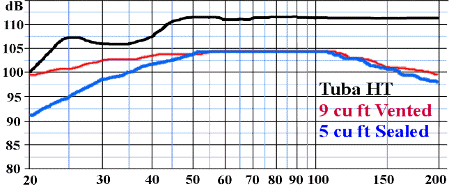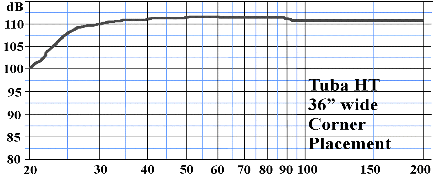@phusis , Shane Lee was saying that the three ton riser they were sitting on was lifted by that beast. I think you could see the stunned look on peoples faces in the demo, like they just saw Jaws in real life.
Powered speakers show audiophiles are confused
17 of 23 speakers in my studio and home theater systems are internally powered. My studio system is all Genelec and sounds very accurate. I know the best new concert and studio speakers are internally powered there are great technical reasons to design a speaker and an amp synergistically, this concept is much more important to sound quality than the vibration systems we often buy. How can an audiophile justify a vibration system of any sort with this in mind.
- ...
- 1204 posts total
And @kingharold , I noticed that the THT measurements are all corner loaded, hence 1/8 space and a 9db gain. Yet the website compares to Genelec readily available measurements which are 1/2 space, i.e. only 3db gain. Not exactly an apples to apples comparison. My comment, so we are both being clear, was a 20Hz flat horn would be enormous. Your what appear to be 24" wide THT, as you said 18cu ft is not exactly "flat" to 20Hz (and of note the 1/2 the size vented catches up at 20Hz).
Even the large 27cu ft version is not flat to 20Hz. This is corner placed so maximum boundary reinforcement. It is not going to get better than this. If you had a vented 18cu sub, it would have a significant advantage in the deepest bass. This is an inherent issue with practical bass horns at least for home theater / effects. For a given size, they can’t reach as low as a vented box can. Better efficiency once you get past deep bass, but not as good for deepest bass. There have been designs that try to address that, but everything is a compromise. Fix one issue, create another.
Not that I would expect it to be by the way, just calling out hyperbole.
Now, you say the midranges are 16 feet from the bass? So I have to assume a much bigger listening room than most would be using? This is also implying that the cutoff for the woofers is above 80Hz? Your definition of midrange may not match what most people’s are. I will reserve judgement till you clarify, but if you are running the bass bins with any output past 120Hz, .... well better not to say anything.
@donavabdear , this brings up back to what you were saying about reflections and phase issues. Folded horns, if you have the space, can get some high efficiency and reasonably low distortion. Think of bass bins essentially. Keep the output below 100-120Hz, and phase issues aren’t a problem as we don’t detect even large group delay at those frequencies. Allow them to leak past 120Hz and other than the obvious locatable sub issue, the oscillating phase makes for audible group delay issues. |
speakerdude, when you state that If my bass to mid crossover is above 120 Hz the bass will leak into the midrange I doubt that you have considered that I am using 16th order (96 dB/octave) crossovers. Your objections to my system are all theoretical because you have never heard them. Those who have heard them , including many audiophiles,have never complained of the things you just "know" have to be wrong with them. I am bored with hearing your censorious comments on speakers you have never heard. I think this will be my last post on this thread. |
@thespeakerdude what is your view on the damage the internal vibration inflicts on the amp fidelity in active speaker designs? Have you ever tested this. |
The realities of path length and flare angle means that for a practical sub-woofer, a vented box will always have the advantage at the lowest octaves. The horn is significantly more efficiency at higher bass, but at the deepest, it is not. If you are recreating the Saturn V, you need the energy at the lowest frequencies, 20Hz and below. You are better off vented. For pure music, you don't have a lot below 40Hz and dropping quick, horn is great for a sub. I realized the Saturn V was both hyperbole, but also representational. You want to recreate life's audible events.
That's fair. Essentially rock concert level, somewhat close to the stage. I am glad you don't listen to it regular. As much as I love live music, I don't say yes to the frequent invites I get any more for amplified events and even for the last long while, I have generally enjoyed with ear plugs. I take enough of a "hit" professionally. Have to respect your ears.
@donavabdear can comment on this better, but the target playback levels, we could call it the intended levels, are far below what your system is capable of.
10 seats out, 105 would be the max, and usually lower. If you were up on the stage, it could hit 120 with some pieces having extended 110db+ sections. This is starting to become a big issue, starting initially in Europe. Due to the amount of practicing, the musicians total exposure can be at ear damaging levels, especially in the brass section, even worse than percussion though percussion can have higher peaks. Lots of talk w.r.t. regulation, creating practice spaces with more distance between performers, positional changes to reduce total exposure, etc.
|
- 1204 posts total



